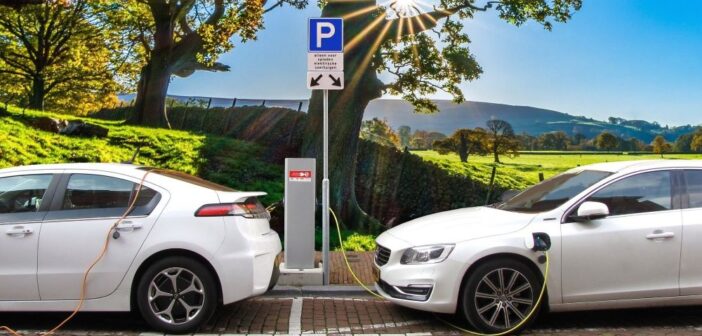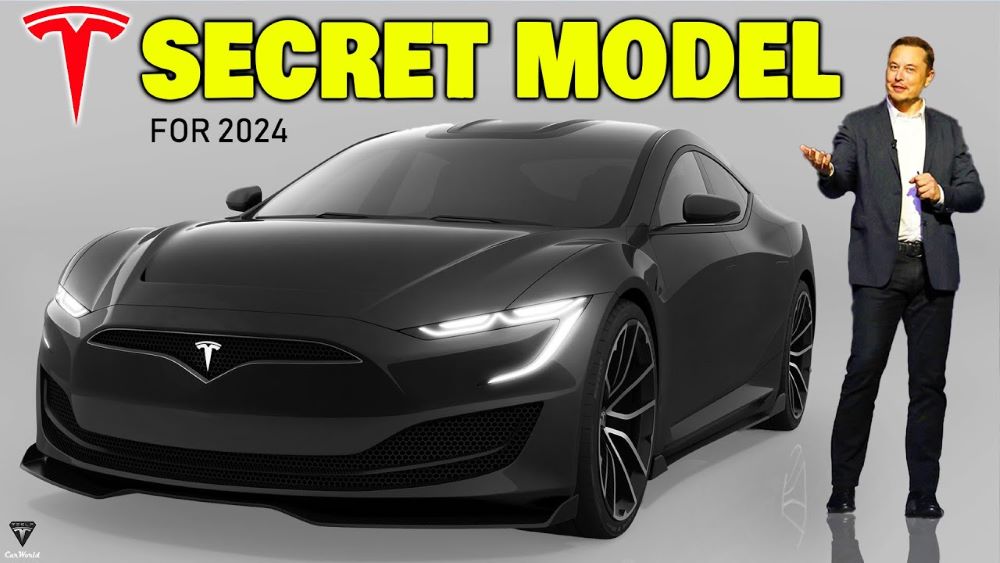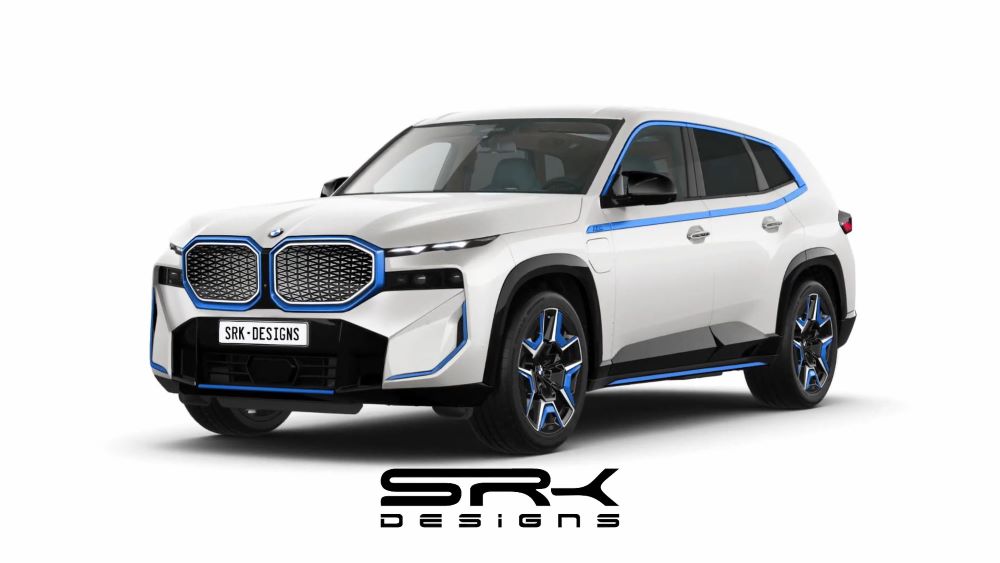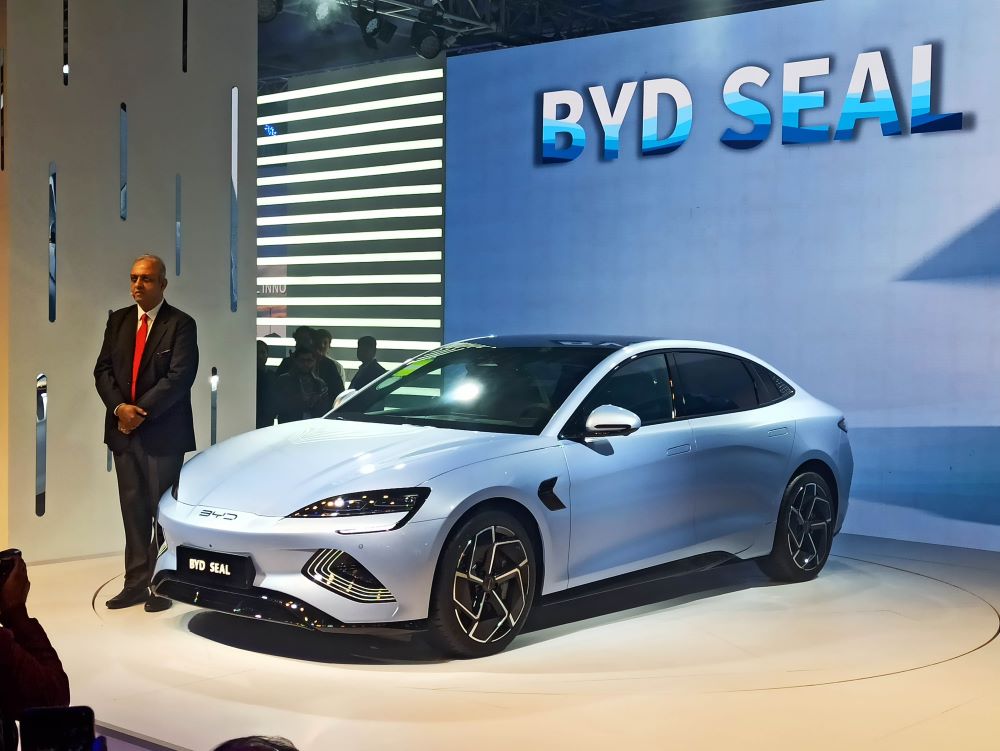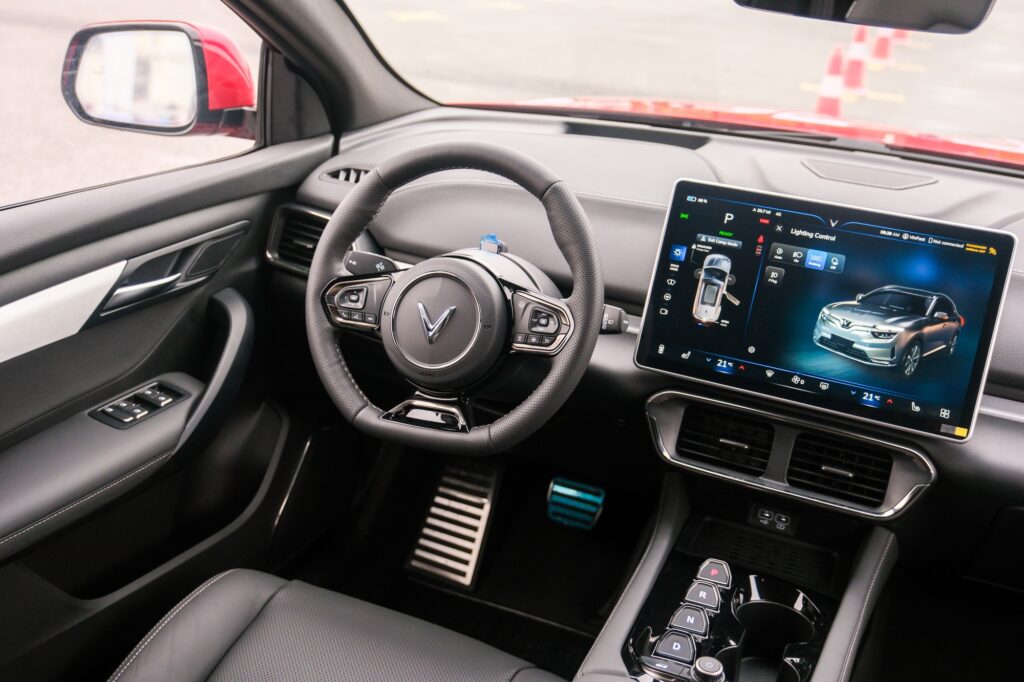Nội dung
- 1 Electrifying the Future: A Glimpse into 2024’s Electric Vehicle Market Trends
- 1.1 1. EV growth slows
- 1.2 2. Pure-Play EV Makers Will Lead
- 1.3 3. Chinese firms accelerate global expansion
- 1.4 4. European Entry of Chinese Automakers
- 1.5 5. Vietnam’s Young EV Company – Vinfast Attacks the North American Market
- 1.6 6. Battle for Electric Truck Market Share
- 1.7 7. Switching Batteries to Avoid Charging Issues
- 1.8 8. Altering Battery Chemistry
- 1.9 9. Governments should Refocus EV Incentives
- 1.10 Conclusion for Electric Vehicle Trends 2024
How are electric vehicle trends in 2024? We foresee the sector’s future based on data, from additional charging stations to government subsidies to “battery swap” freedom.
After a record year of sales, the Electric Vehicle (EV) market will enter a new development phase in 2024.
Global EV sales rose 43.66% in the first nine months of 2023 and exceeded 1.5 million units in September, according to battery raw material supplier Syrah Resources.
According to Cox Automotive data, US EV sales rose 50% year over year in the third quarter to a record high of 300,000, putting the country on course to exceed 1 million for the year.
Traditional car manufacturers are decreasing their EV manufacturing, while Chinese EV makers are expanding internationally to boost sales as the home economy weakens.
What market trends should you watch in 2024?
Electrifying the Future: A Glimpse into 2024’s Electric Vehicle Market Trends
1. EV growth slows
After a high year-on-year growth in EV sales in 2023, the market is projected to decelerate next year as it targets price-sensitive mainstream purchasers.
As competition increased in 2023, Tesla dropped Model 3 and Model S pricing by 25%.
On Ford’s third-quarter results call, CEO Jim Farley said:
EV demand remains high. Just cheaper prices and overcapacity in the center of the market.”
UBS forecasts worldwide EV market share at 47% in 2030, down from 54%. Due to increased consumer uncertainty, reduced subsidies in some countries, bigger discounts for vehicles with internal combustion engines (ICE), and a limited selection of more cheap models, the bank expects sales growth in Europe and the US to decelerate to 10-15% in 2024 from 25-50% in 2023.
Battery monitoring platform Recurrent co-founder and CEO Scott Case says.
Demand remains high, but inexpensive electric vehicles are few. In fact, price-cut EVs lead the market.”
We’re seeing the hurdles luxury EVs confront in a tough economy.
Consumer interest rates are rising, lease terms are three times what they were a few years ago, and many customers know there are better incentives and new inexpensive models coming.
From January 1, 2024, US EV tax credits will be transferable to point-of-sale discounts, saving buyers up to $7,500 on new EVs and $4,000 on used EVs as rebates or down payments.
2. Pure-Play EV Makers Will Lead
Volkswagen, Toyota Motor, Stellantis, Mercedes Benz, and Ford are launching EV vehicles to compete as EV market share grows. They are slower than Tesla, BYD, Nio, and XPeng, EV-only manufacturers.
Pure-play EV manufacturers can advance quicker than traditional automakers and take advantage of technical innovation.
Cost pressure and US unionized worker strikes, partly motivated by concerns about EV production procedures that could jeopardize autoworker jobs, make the EV transition difficult for traditional manufacturers.
Ford, GM, and Mercedes have cut 2023 EV sales predictions and production plans. Tesla has also slashed prices for its Model Y, which is expected to be the best-selling car worldwide this year, with larger profit margins than most ICE vehicles.
BYD moved to just make EVs in 2021 and overtook Volkswagen as China’s best-selling car brand. It neared Tesla’s global EV sales in Q3.
3. Chinese firms accelerate global expansion
Chinese automakers are tapping into their domestic success by increasing production and sales abroad to hedge against a slump.
According to the World Resources Institute, China ranks fifth in passenger vehicle EV sales, after Norway at 80%, Iceland at 41%, Sweden at 32%, and the Netherlands at 24%.
However, as the world’s largest car market, it dominates sales. Chinese EV sales reached 4.4 million in 2022, surpassing the global total of 3 million.
Chinese automotive parts producer SuperAlloy Industrial expects global sales of electric, hybrid, and fuel cell vehicles to rise 32% to 17 million in 2024.
Chinese automakers produced ICE automobiles later than others. Still, they saw the chance to invest early in EVs to export batteries and vehicles abroad. The government has promoted EVs to minimize air pollution and oil imports.
Retail EV sales rose over 40% year over year to 841,000 units in November, giving EVs 40.4% of the Chinese passenger vehicle market. Retail sales rose 35.2% to 6.81 million units year-to-date. The EV sector’s resiliency throughout China’s economic recession suggests fundamental growth. In 2024, Chinese automakers are targeting worldwide markets.
4. European Entry of Chinese Automakers
The Chinese government’s Made in China 2025 industrial strategy requires the country’s largest two EV manufacturers to sell 10% abroad by 2025.
In a recent Shenzhen Stock Exchange filing, “BYD is actively seeking to tap the overseas markets, banking on both exports and local production,” one of the two. “Our global expansion pace will accelerate.”
In November 2023, BYD began shipping its European sedan and aims to sell a mid-size SUV in 2024. XPeng sells cars in four European countries and wants to reach Germany in 2024. Leapmotor plans a 2024 European expansion.
Stellantis, a Dutch automaker, bought a 20% share in Leapmotor and will form a joint venture to extend the Chinese EV startup throughout Europe The arrangement includes an option to manufacture vehicles in Europe, mirroring Chinese automakers’ efforts to minimize import levies and shipping expenses.
5. Vietnam’s Young EV Company – Vinfast Attacks the North American Market
Introducing VinFast, the cutting-edge Vietnamese automotive manufacturer poised to revolutionize the electric vehicle market in the United States and Canada in 2024.
Renowned for its commitment to innovation, sustainability, and superior engineering, VinFast is set to bring a new era of electric mobility to North American roads. With a diverse portfolio of electric cars that seamlessly blend style, performance, and eco-friendliness, VinFast is dedicated to providing consumers with an unparalleled driving experience.
As the world transitions towards a greener future, VinFast’s electric vehicles stand at the forefront of this transformation, offering state-of-the-art technology, impressive range capabilities, and a commitment to reducing carbon footprints.
Embrace the forthcoming evolution in electric vehicle trends in 2024 by welcoming VinFast into the North American market. Here, the convergence of quality, sustainability, and innovation promises to redefine the driving experience, marking a new era of automotive excellence.
Top manufacturers will compete for electric truck market share next year. Automakers can now build electric trucks using battery technology that can power larger vehicles for longer distances.
Tesla will start mass-producing its long-awaited Cybertruck in 2024. The angular body, twin or tri-motor drivetrain for quick acceleration, and big towing capacity have attracted car aficionados and given it a competitive edge.
The Cybertruck will compete with Ford’s upgraded F-150 Lightnings, GM’s Chevrolet Silverado, GMC’s Sierra, and Toyota’s Tacoma in 2024. According to the company, Volkswagen’s Scout brand has designed its first electric truck for the US market, while Ram is introducing a new pickup with a 168-kWh standard battery pack that has a 350-mile range and the option to upgrade to a 229kWh battery pack that will give the truck a market-leading 500-mile range.
7. Switching Batteries to Avoid Charging Issues
Slow public battery charging infrastructure is a major barrier to EV adoption.
While manufacturers attempt to build wide charging networks for urban, highway, and rural areas, battery-swapping facilities have developed as a means to fill the gap. Battery switching technology lets drivers replace their vehicle’s battery modules with fully charged ones in minutes without waiting.
Nio began a battery-swapping service in 2020 and has over 2,000 sites in China and 30 in Europe. The company secured arrangements with Changan Automobile and Geely in November to establish swappable battery standards and extend and share battery swapping networks in Chinese cities.
BMW and Mercedes-Benz launched a joint venture in China to install 1,000 China Super Charging Network stations, with the first opening in 2024.
In Europe, Nio has delayed its UK entry from 2024 to 2025 to ensure battery switching capability. Stellantis has partnered with US-based Ample to deploy its modular battery-swapping technology in EVs. The Stellantis Free2move car sharing service will use 100 Fiat 500e automobiles in Madrid to launch the program in 2024.
Khaled Hassounah, CEO of Ample, said in the announcement that offering enticing electric vehicles that can be fully charged in less than five minutes will help remove the remaining hurdles to electric vehicle adoption.
Battery swapping and bi-directional battery charging will extend EV owners’ options in 2024.
8. Altering Battery Chemistry
Battery swapping could assist EV makers manage a short-term battery chemical shift-induced energy density and driving range drop.
EV batteries typically have lithium-ion cathodes and graphite anodes. Lithium-ion batteries with nickel-based cathodes—NMC or NCA—have higher energy density and longer driving range than LFP batteries. Manufacturers are seeking alternatives due to unpredictable market prices and supply chain problems for these metals.
LFP batteries are reclaiming market share from NMC, and numerous companies are developing silicon anode, solid-state lithium-ion, and sodium-ion batteries, which have more stable chemistries and less nickel, cobalt, and graphite.
SK On Company, the EV battery manufacturing subsidiary of South Korean conglomerate SK Group, has developed a solid-state electrolyte material and plans to build a pilot plant in 2024 to produce prototypes by 2026 for mass production in 2028. Toyota and energy and chemicals company Idemitsu Kosan are building a solid electrolyte supply chain to commence pilot production in 2027–2028.
BYD has partnered with Huaihai Holding Group to construct a sodium-ion battery production center in China, and CATL announced earlier this year that Chery would be the first to deploy its batteries. In November, Swedish battery maker Northvolt announced the development of its first sodium-ion cell for energy storage. The business plans to produce succeeding generations with enough energy density for EVs.
Sila, a US company establishing a silicon anode battery materials plant, will offer Panasonic Energy with lithium-ion batteries with longer driving ranges and faster charging times.
9. Governments should Refocus EV Incentives
In order to promote electric vehicle trends in 2024, since EVs are more expensive to construct than ICE vehicles, governments in many countries have offered rebates, loans, or tax credits to consumers and manufacturers to embrace them.
EV sales have grown dramatically in recent years, thus some governments are shifting their incentives.
The Inflation Reduction Act requires automotive manufacturers to build a domestic EV supply chain by January 1, 2024, and vehicles with battery components from a “foreign entity of concern” like China will lose their $7,500 federal tax credit.
Since suppliers have dropped prices, Victoria and New South Wales will remove EV purchase incentives in January. Still, they will repurpose some cash to create extra charging stations to boost adoption.
The Thai government has prolonged consumer EV subsidies until 2027, although it has lowered their value since EV use has expanded significantly. Thailand, southeast Asia’s automotive capital, wants to become the region’s EV production base due to its strong EV market and manufacturer subsidies. Many Japanese and Chinese automakers are expanding in the country.
EVs emit less carbon than ICE vehicles over their lifespan, but the manufacturing process and long-distance shipping raise problems.
Starting in January 2024, the French government will offer cash incentives for EV consumers based on the vehicle’s raw materials, manufacture, and components. This implies automobiles made in France and the EU using renewable energy are qualified, while those made in China using coal-fired electricity are not.
Conclusion for Electric Vehicle Trends 2024
The EV industry will likely change significantly in the coming year as manufacturers react to changing economic, competitive, and technological situations.
In electric vehicle trends 2024, uptake may slow, but global EV sales are expected to rise as part of the energy shift to cut carbon emissions. New car models and government incentives will boost consumer acceptance.
Source: nasdaq.com ; vinfast.vn
